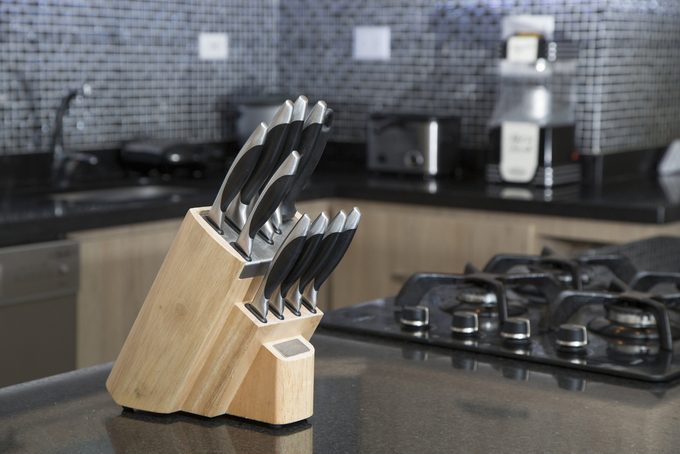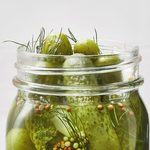Caring For Kitchen Knives
Taking proper care of your kitchen knife can make the difference between the joy of cooking and kitchen frustration. Here’s how to keep your knife sharp and shiny so you can keep slicing.

Skip the Dishwasher
If your knives have wooden handles, you should never put them in the dishwasher or immerse the handles in a sink full of water. The process of wetting and drying wooden handles can make them crack. To clean your knives, simply wipe them off with a soft, damp, soapy cloth and then rinse them under running water. In fact, this is the best way to clean any kitchen knife, even ones with “dishwasher-proof” plastic handles; dishwasher jets can knock knives around, damaging their edges when they knock into other utensils. By washing knives separately, you also eliminate the possibility of cutting yourself while fishing around for sharp knives in a sink full of water.
Clean Quickly
Some foods contain acids that can quickly start to stain even “stainless steel.” To keep your knives in great shape, get in the habit of wiping them clean immediately after each use.
Keep ’em Sharp
The edges on kitchen knives are different than the edges on other knives and cutting tools. A knife or chisel designed to cut wood, for example, is made of harder steel, and it relies on a straight, thin edge to keep it sharp. When the edge on these tools dulls, you rub them on a flat stone to remove steel to make the edge thin and sharp again. The edge of a kitchen knife blade is also thin, but it has saw teeth that are so small you’d need a microscope to see them. The teeth let the knife bite easily into soft foods, like a tomato. The knife becomes dull because these teeth get bent. So to sharpen, you want to use a sharpening steel to straighten the teeth, rather than remove them. Get in the habit of using the steel before or after each time you use the knife.
Whiten Bone Handles
Bone knife handles invariably yellow with age. In fact, some folks like this aged patina. If you don’t, all you have to do to whiten them is occasionally wrap the handles in a piece of flannel moistened with hydrogen peroxide and water.
The Right Cutting Surface
Your knives will dull quickly if you cut against hard surfaces, such as marble, metal, ceramic, or glass. So be sure to use a cutting board made of wood or plastic-softer materials the knife can cut into.
Cut Peppers from the Inside
The waxy exterior of bell peppers is harder on knives than the soft, fleshy interior. So when slicing peppers, cut them open and then slice them from the inside.
Store Knives in a Wooden Block
Storing your kitchen knives in slotted wooden blocks keeps them safe from nicks in the blades that are sure to occur if you keep you knives in a drawer. It also keeps them handy and protects you from cuts that might occur if you accidentally grab a knife by the blade.
Dry Knives Thoroughly
To ward off rust, make sure your knife blades are completely dry before sliding them into the knife block. You’ll also prevent mold from developing inside the wooden block slots.
Take Special Care with Ceramic Knives
Like most things in life, ceramic kitchen knives are a trade-off. These relatively new additions to the kitchen stay very sharp for a very long time. Food and food odors don’t adhere to them, they don’t rust, and they wipe clean with ease. On the downside, ceramic knives are brittle. Unlike a flexible, resilient steel knife, a ceramic knife cannot withstand pressure. Don’t use it, for example, to bone a chicken. If you absentmindedly grab your ceramic knife to crush a piece of garlic with the side of the blade, you might snap the blade.
Don’t Pry with a Knife
When you need to pry open a jar, it’s tempting to grab that kitchen knife. Don’t do it! Not only can you ruin the knife by bending and dulling the blade, you might end up with a deep cut in your hand.



